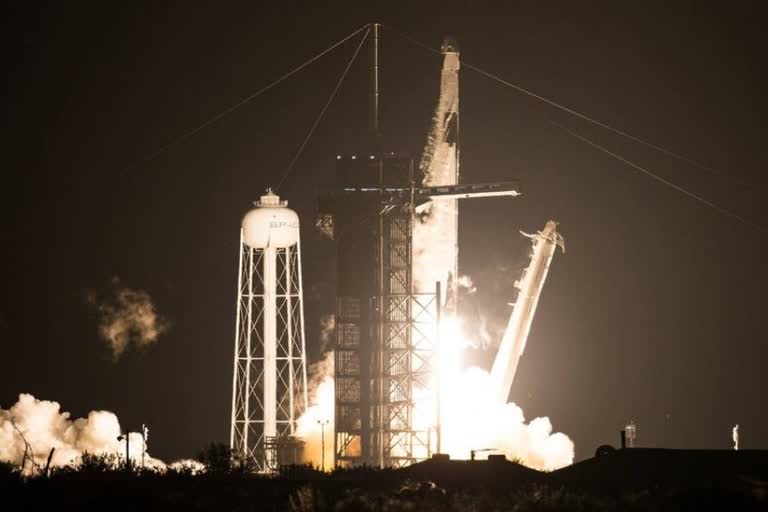A hefty chunk of a SpaceX Falcon 9 rocket will crash into the far side of the Moon (not visible from the Earth), on March 4, in a fiery explosion at about 8,000 kms per hour speed. It was US astronomer Bill Gray who calculated the space junk's new collision course with the Moon. According to ABC News, Gray developed software that keeps tabs on objects whizzing around inside our Solar System, along with a troupe of observers around the world. They predict the spaceX junk will crash at 11.25 a.m. AEDT (4.55 p.m. India time) on March 4. The impact will be minor, according to the scientists. The rocket was deployed in 2015 to put into orbit a NASA satellite called the Deep Space Climate Observatory (DSCOVR).
How did a 4-tonne piece of rocket accidentally end up on track to smash on the lunar surface?
Once out of fuel, the first stage typically falls back to Earth quickly. The Falcon 9 engine that's currently en route to the Moon has travelled much further than most other satellite-delivering rockets. When the first stage ran out of fuel, it dropped off and headed back to Earth. "The second stage provided the extra oomph needed to steer DSCOVR closer to its operational spot. Its job done, the second stage was jettisoned and left to tumble through space, more than a million kilometres from Earth," according to the report.
In the seven years since, the rocket stage has been affected by the Moon, Sun and Earth's gravity, wrangling it in an unpredictable orbit. Now, the SpaceX rocket stage is set to crash into a 520km-wide crater called Hertzsprung on the lunar surface. The Moon has no atmosphere, so the stage won't burn up on its way down. "Instead, it will smash straight into the rock and scatter bits over the lunar surface," Jonathan McDowell, an astrophysicist at Harvard University, told Radio National. "There's going to be a huge spray of moon dust going many miles into the sky above the Moon," McDowell was quoted as saying. It's likely that other objects abandoned in deep space have smashed into the Moon too.
(IANS)
Also Read: Skyroot Aerospace to fly its rocket from mobile launch pad in 2022



